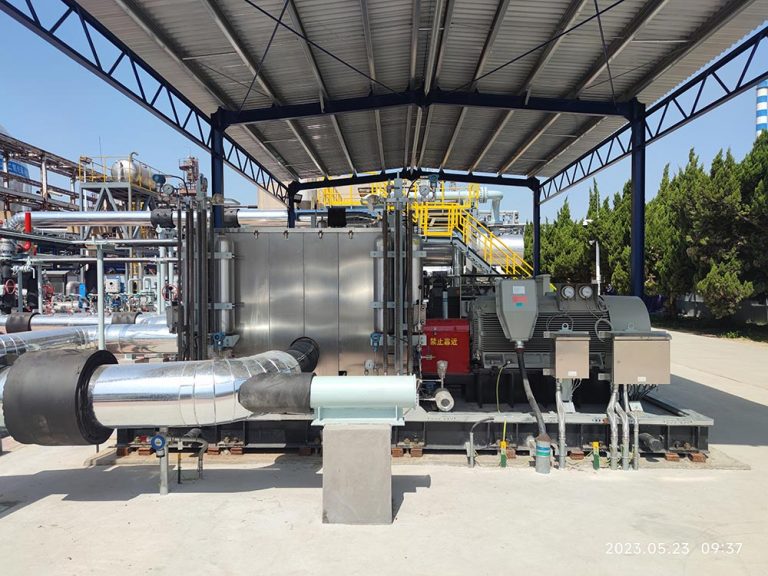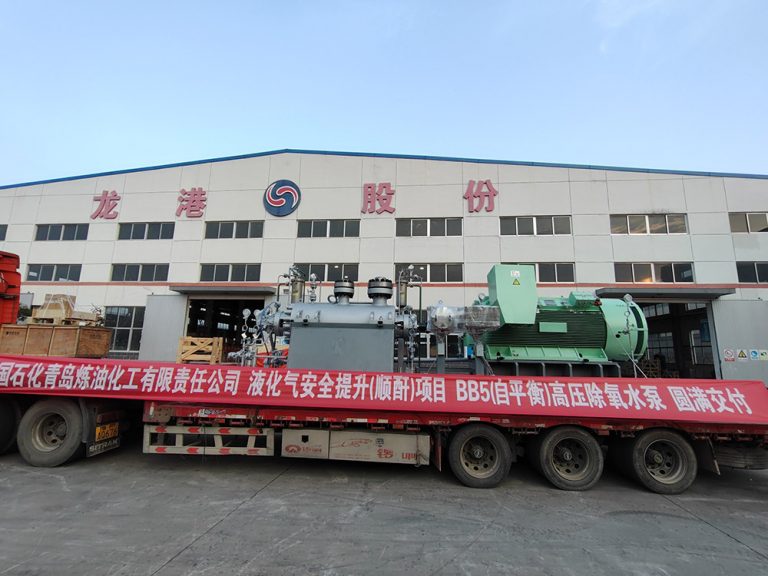The oil industry depends heavily on pumps to perform critical operations, including transporting oil from deeper earth reservoirs and transferring hydrocarbons through refiners economically and efficiently. Knowledge of the types of pumps and their application can maximize efficiency and counter the challenges of real-world practicalities in this complex industry.
What is the Use of Pumps in Oil Industry?
The oil sector extensively employs different kinds of pumps in the process of facilitating extraction, transportation, and refining operations. These are significant devices that transfer fluids from intricate systems utilized for oil processing and drilling.
Overview of Roles of Pumps
In the oil industry, pumps have numerous very important functions. Pumps carry crude oil from wells to refineries, pump fluids within processing plants, and also dispose of wastewater. Pumps are responsible for keeping fluid flow constant in pipes and equipment so that production can proceed uninterruptedly.
Application of Pumps in Oil Refining and Extraction
Drilling for oil is largely dependent upon pumps to transfer oil from deep inside reservoirs to the surface with safety and efficiency under unfavorable conditions, i.e., pressure and temperature. Pumps also have a place in the process of refining. Pumps transport hydrocarbons in reactors and distillation towers and other pieces of equipment such that refining crude oil into end products for local consumption can be carried out.
Challenges Pumps in Oil Industry Involve
Pumps in these use cases need to overcome the drastic challenges. They need to handle abrasive, harsh material in abrasive applications. And they need to be dependable over long spans of time. Use of sturdy materials and wise designs helps counteract them.
How Are Centrifugal Pumps Used in Oil Operations?
Centrifugal pumps find widespread use in oil operations due to their capability to overcome large volumes of liquid with ease and efficiency.
Types of Centrifugal Pumps
The oil field offers a number of centrifugal pump types, each of which is made to meet some specific requirements and provide some unique advantages based on the job’s requirements.

Axial Flow Pumps
Axial flow pumps are used to move liquid in the same direction as the rotation of the pump shaft. They are best suited for use in systems where a large quantity of liquid is needed to flow under low pressure, e.g., moving very high volumes of water or fluids over short distances.
Radial Flow Pumps
Radial flow pumps move fluid radially outward from the pump shaft. They’re commonly utilized whenever modest flow rates at high pressures are needed, e.g., feeding refinery process equipment.
Mixed Flow Pumps
Mixed flow pumps have the characteristics of both radial and axial types. They provide a good compromise between flow rate and pressure, suitable for various oil extraction and processing applications.
Applications of Centrifugal Pumps in Oil Extraction and Processing
Positive displacement pumps have a very significant role in refining and equally important in extraction. In extraction, they move oil from wells or through a pipeline. In refining, they move hydrocarbons from reactors or distillation towers. Their smart design, where suction and discharge pipes are well placed within the casing, allows maintenance without having to dismantle pipes.
Why Are Positive Displacement Pumps So Vital in Oil Production?
Positive displacement pumps play an important role in thick fluid or solid bitted fluid control in the oil production process. They deliver a constant rate of flow independent of pressure changes and are useful in some applications.
Types of Positive Displacement Pumps
There are two types, the reciprocating and the rotary. Both of them have their own particular advantages depending on the nature of the job.
Reciprocating Pumps
Positive displacement pumps utilize pistons or diaphragms in displacing fluids by varying pressure differences across chambers. They are suited where one requires having accurate control of flow rates or high-set pressures.
Rotary Pumps
Rotary pumps utilize moving parts, including screws or gears, in the displacement of fluid through enclosed paths. They function very well when one is handling viscous fluid with minimum pulsation.
Special Oil Field Applications of Positive Displacement Pumps
Oil well pumps are used for services like chemical injection into wells for enhanced recovery operations or the economic pumping of heavy, viscous oils. They are stiffly designed so that they may run smoothly even in severe operating conditions.
While choosing pump solutions for your operations, it can make a big difference to deal with a trustworthy supplier. Choose suppliers who have the latest design tools to ensure high-performance pumps that exactly suit your needs.
What is the Significance of Submersible Pumps in Oil Drilling?
Submersible pumps have their key role in the oil industry in their specific underwater application, being aptly suited for pumping oil from a deep well. They have a high heat- and pressure-resistant design that ameliorates lift issues faced by other pumps.
Submersible Pumps Types
There are two significant types used for oil field use, both types specifically designed to fit specific environments.

Electrical Submersible Pumps (ESP)
Electrical submersible pumps (ESPs) are most suited for pumping high volumes of fluids from deep wells. It is a multistage centrifugal combination of a motor, delivering high-strength service and durability in oil drilling.
Hydraulic Submersible Pumps (HSP)
Hydraulic submersible pumps (HSPs) are driven hydraulically and thus are the best option where electricity is not available. They have an advantage over ESPs for pumping heavy fluids and solids and offer a very good alternative to some extraction operations.
Fields of Application of Submersible Pumps in the Oil Industry
Submersible pumps are used in various applications in the oil industry. They transfer crude oil from reservoirs underground, facilitating efficient production. They also regulate water levels by dewatering, ensuring smooth and efficient conditions.
How Do Multiphase Pumps Enhance Efficiency in Oil Recovery?
Multiphase pumps have changed oil recovery by enabling the transportation of gas-liquid mixtures without splitting on site. The technology increases productivity by conserving time and processing expense compared to conventional splitting operations.
Overview of Multiphase Pump Technology
Multiphase pump technology uses intelligent hydraulic designs to process complex mixtures efficiently. It keeps flow rates in line irrespective of shifting fluid properties, which is highly beneficial at extraction sites where the environment varies considerably.
Benefits and Applications of Multiphase Pumps
They simplify oil field transporting by skipping separation processes, reducing setup needs and costs. They’re highly convenient in limited spaces and optimize recovery from heterogeneous-output or low-pressure wells.
How Diaphragm Pumps are Advantageous to the Oil Industry?
Diaphragm pumps are of great benefit in the oil industry. They can work effectively with gritty and abrasive fluids without efficiency being undermined by their sturdy construction that has them endure harsh conditions of oil exploration.
Working of Diaphragm Pumps
Diaphragm pumps function by displacing diaphragms in opposite directions in a chamber to create pressure gradients. This transfers fluid through valves into discharge pipes efficiently, especially with particle or viscous fluids, without allowing contact between the pumped material and moving parts.
Uses of Diaphragm Pumps in Oil Production at Every Stage
Diaphragm pumps enjoy application versatility in oil drilling, drilling support, mud cycling, and accurate chemical dosing. In refineries, they handle waste liquids and slurries with solids or aggressive chemicals.
Why Yantai Longgang Pump Industry Co., Ltd. Is a Reliable Supplier?
Yantai Longgang Pump Industry Co., Ltd is a certainty since they place great emphasis on design and manufacture quality. They utilize the latest equipment to ensure that their pumps are of the highest performance class. Their focus on complying with strict standards speaks volumes about how much they care about supplying useful, dependable pumps for a diverse variety of oil field applications.
FAQs
Q: What is the difference between positive displacement pumps and centrifugal pumps?
A: Centrifugal pumps use rotating energy to move fluids in a system efficiently. They’re suitable for handling volumes with varying force requirements. Positive displacement pumps, on the contrary, hold and pressurize definite volumes of fluid through the outlet. This system suits fluid-particles or thick particles.
Q: How do pumps ease the refining process of petroleum activities?
A: They process hydrocarbons via reactors and distillation plants to enable efficient conversion of crude to products.
Q: How does the selection of materials influence petroleum pump performance?
A: Long-lasting materials such as stainless steel are corrosion- and wear-resistant, ensuring longer pump life in abrasive and severe environments.








